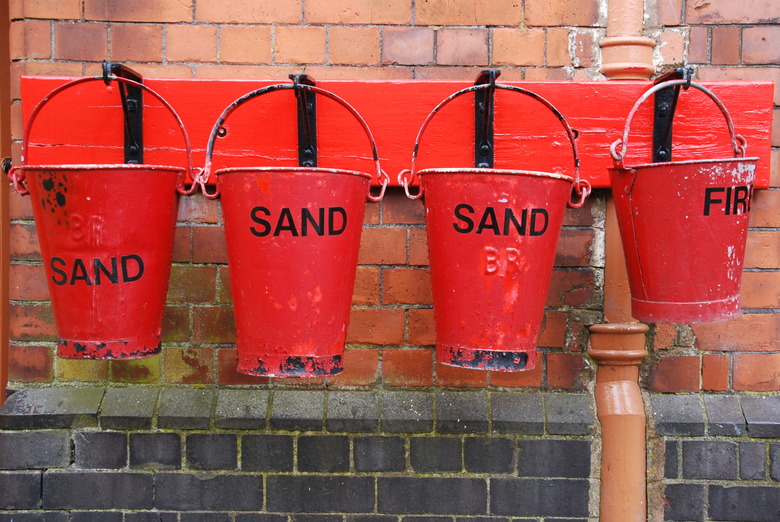How To Use A Bucket Of Sand To Put Out A Fire
A bucket of sand to put out a fire might not be the most obvious choice with the availability of fire extinguishers, but it can be effective for certain types of fires. Using a bucket of sand instead of a fire extinguisher is a more traditional fire-fighting method. Knowing how to use the sand correctly is crucial for making it effective for putting out fires.
When to Use Sand
When to Use Sand
A bucket of sand isn't appropriate for extinguishing all types of fires. You get one shot with the bucket of sand to put out the fire, so it won't work on large, out-of-control fires. It's best for small grease fires, flammable material fires, and electrical fires where using water is dangerous or ineffective.
It's often recommended to use sand or dirt to smother a campfire or bonfire. However, it can be a dangerous way to put out these types of controlled fires. While it might extinguish the flames initially, the sand can keep the leftover wood and embers smoldering underneath. It could eventually reignite, which poses a fire risk.
How Fire Buckets Work
How Fire Buckets Work
Fire buckets are usually made of plastic or metal with a convex bottom to help propel the fire-extinguishing material out of the bucket. Most fire buckets are bright red, so they're easy to spot in an emergency situation. These fire buckets can be used for sand, water, or absorbent materials depending on how you want to extinguish the fire.
Because they're generally small, fire buckets are relatively easy to handle. They're inexpensive, and you can refill them easily yourself by simply putting new sand in the bucket so it's ready if you need it again. To recharge a fire extinguisher, you need specialty equipment, which often means having a professional do it.
There are some drawbacks to sand buckets. They can be heavy when they're full, which can be difficult for some people to manage. Typically, buckets don't have good handles, potentially making it more difficult to grab the bucket and toss the sand at the fire. It also leaves behind all of the sand, which can be difficult to clean up completely.
Extinguishing a Fire With Sand
Extinguishing a Fire With Sand
Keeping the sand bucket close to your stove or in a garage workshop where flammable material might catch on fire increases its effectiveness. You can often get hangers for the wall so the bucket is convenient to grab. Pour or toss the sand directly on the fire to smother it. You need to be close enough to direct the sand accurately without getting too close. The sand keeps oxygen from reaching the flames, which prevents the fire from growing.
There can be hot spots underneath the sand that can still be a threat. Once the flames are under control, stir around the sand carefully to make sure there aren't any remaining hot spots.
If the sand doesn't extinguish all of the flames and you don't have another sand bucket on hand, call 911 to get help from firefighters. Don't wait, as a fire can quickly spread out of control. If the fire is inside your home and the sand doesn't work, get out of the home and wait for help.
Cleaning Up the Sand
Cleaning Up the Sand
Once the fire has been extinguished and all hot spots are under control, you need to clean up the sand. If it was used to clean up a fire with hazardous chemicals or materials, the sand should now be considered hazardous material. Check with local waste management services to find out how to dispose of the sand properly.
Clean and refill the bucket with more sand after you're done with the cleanup. Put it back in its storage spot so it's ready in case you need the fire bucket again.
